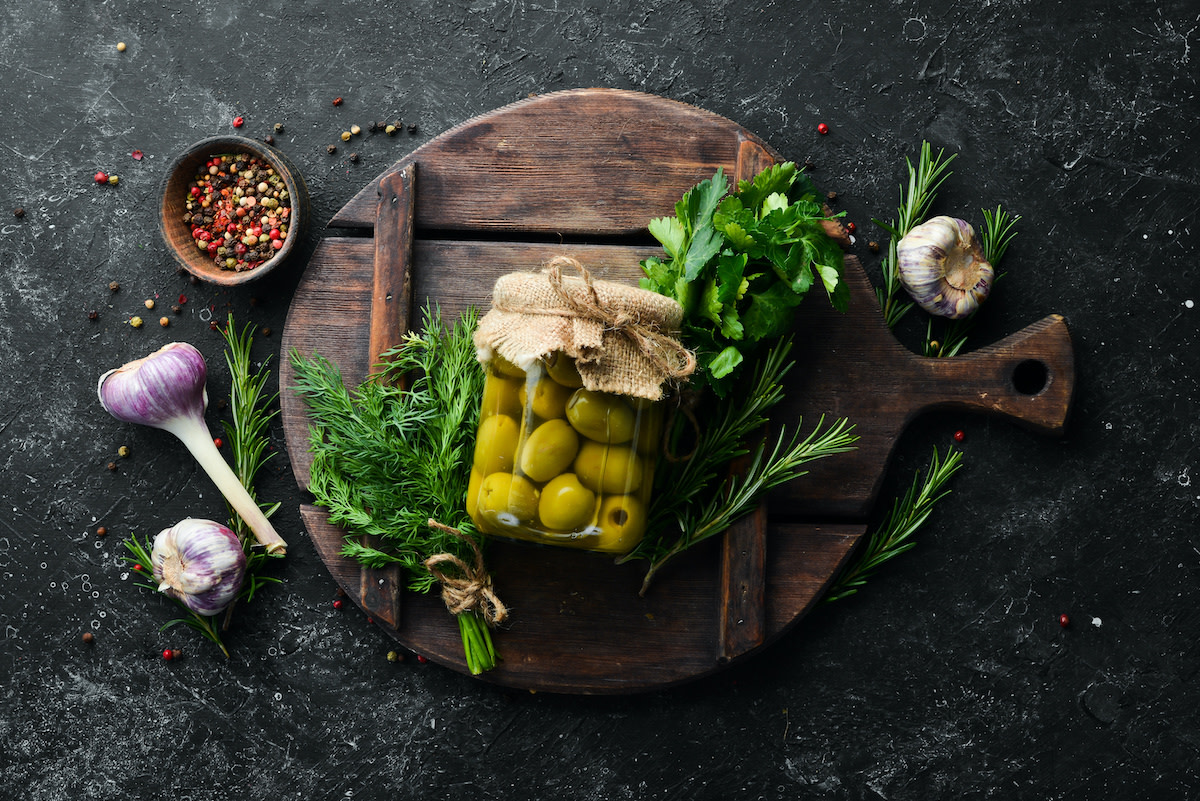How to Cure Fresh Olives Using the Brining Method
Written by MasterClass
Last updated: Jun 7, 2021 • 3 min read
Learn how to transform raw, ripe olives into an addictive, salty treat.
Learn From the Best
What Are Olives?
Olives are small fruits that grow on olive trees (Olea europaea) native to the Mediterranean. The color of an olive is a direct indicator of its ripeness: olives picked near the beginning of the growing season are green, olives picked in the middle will carry a brown to reddish hue, and olives picked at full maturity have a deep purple to black hue. About 90 percent of harvested olives are pressed into olive oil, but the remaining 10 percent are consumed as table olives.
How Does Olive Curing Work?
Raw olives are inedible due to their high concentration of oleuropein, an extremely bitter compound found in olive skins. The green olives in your martini and Kalamata olives on your mezze platter have been cured for preservation and to make them more palatable. Today, there are four main methods for curing olives:
- 1. Water-curing: Water-curing involves soaking olives in water, then rinsing and soaking them again in fresh water, and repeating the process over a period of several months. Once most of the oleuropein has been removed, the olives are typically soaked in a final brine of vinegar and salt, which both adds flavor and prevents spoilage. Water-curing is the method used to make Kalamata olives.
- 2. Brine-curing: Brine-curing involves soaking olives in salt water for three to six months. Under the brine, olives ferment, breaking down the oleuropein and converting some of the sugar in the olives into lactic acid, which preserves and flavors the olives. This is the method used to make Greek-style black olives and Sicilian-style green olives, as well as French green Picholine and Lucques olives, which are cured in brine for 10–12 days.
- 3. Dry salt-curing: Salt-curing involves packing small, ripe (or even overripe) black olives in sea salt for five to six weeks. This method results in salty, wrinkled olives, such as Italian Gaeta olives and Nyons olives from France. You can also use this method for curing ripe California Mission olives.
- 4. Lye-curing: Lye-cured olives are soaked in a lye-water solution that quickly breaks down the olives’ waxy outer coating and removes the bitter oleuropein. The olives are then repeatedly rinsed in cold water to remove the lye. After rinsing, the olives are usually soaked and stored in a vinegar brine, or fermented. Spanish-style green olives are cured in lye and ferment for 2–6 months. (You can find food-grade lye at hardware stores.)
What Do You Need to Brine and Cure Olives at Home?
The olive brining and curing process requires just five items:
- Raw green olives, such as Sevillano
- Seasonings, such as black peppercorns, dried chiles, fennel seeds, and garlic cloves
- Pickling salt
- Distilled white vinegar (5% acidity)
- Glass jars or other airtight containers
How to Brine and Cure Your Own Olives
The brine curing method is one of the easiest methods for beginners since it doesn’t require any special ingredients or equipment. However, brine-curing olives can be a lengthy process. For faster olive production, experiment with incorporating lye into the brine.
- 1. Clean and sort olives. Sort through the olives and discard any damaged olives or debris. Pack olives into glass jars or other airtight containers. Sort by size, if desired. (Olives grouped by size will cure more uniformly.)
- 2. Add seasonings. Add seasonings of your preference to the olive jars.
- 3. Make the brine. Combine 1–1½ cups of pickling salt with one gallon of cold water (use more salt for smaller olives; less for larger olives) and 2 cups of vinegar. Stir the mixture to dissolve the salt. Pour the brine over the olives to cover. Top with lids, but do not screw tightly.
- 4. Ferment. Store olives in a warm place (about 70°F) for two months, checking often to replace any brine that has bubbled over. The brine should be active and bubbly, a sign of fermentation. If olives become moldy or soft, discard.
- 5. Wait. When the olives no longer actively bubble, tighten lids and store until olives reach the desired flavor, about 2–4 more months.
- 6. Store. Store olives in their brine in airtight containers, in a dark, cool place for up to one year.
Want to Learn More About Cooking?
Become a better chef with the MasterClass Annual Membership. Gain access to exclusive video lessons taught by culinary masters, including Chef Thomas Keller, Gabriela Cámara, Massimo Bottura, Dominique Ansel, Gordon Ramsay, Alice Waters, and more.
